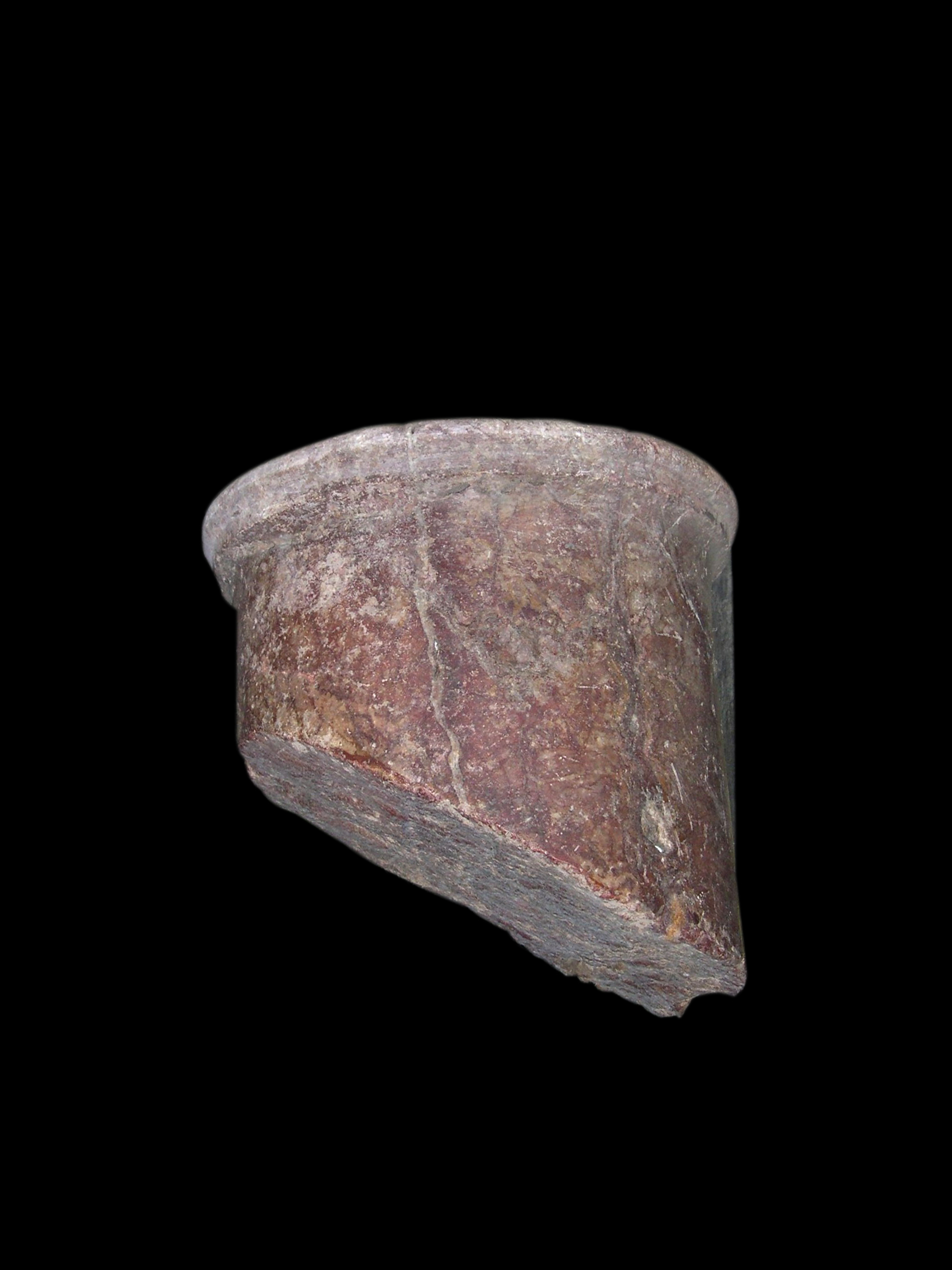Fragment of plain column shaft
Fragment of the top part, with upper flare preserved, of a plain column shaft carved in “Portasanta” marble (Marmor Chium) which shows a diagonal cut. The rough surface has not been repolished. The block of streaked marble is characterized by a deep red background. The light yellow and orange stains are overlapped, thus creating larger greyish-brownish patches with blurred contours and veins of whitish and deep dark red colour. The modern name dates back to the Renaissance, when this quality of marble had been used for the door-jambs of the “Sacred Gate” of St. Peter in the Vatican, S. Paul, S. Maria Maggiore and S. Giovanni in Laterano. The ancient name “Marmor Chium” refers instead to the place where it was quarried, the island of Chios. Regarding its first use in Rome, there are no certain information. According to R. Gnoli it was employed simultaneously to “Giallo antico”, “Africano”, “Cipollino” and “Pavonazzetto”, with which it appears to be one of the most common coloured marbles in Rome, especially favoured during the Trajanic and Hadrianic ages.







